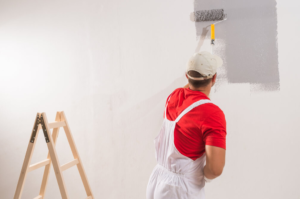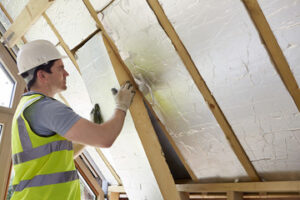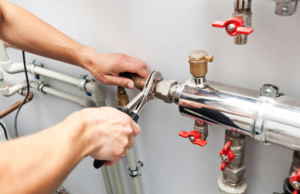House Painter Avondale works with a variety of painting materials to apply coatings to the exterior and interior of homes. They can be self-employed or employed by private companies. They may also work as part of a union apprenticeship program.
The best painters will ask about the colors you want, finishes, etc. They will be able to recommend brands of paint that have performed well for their clients.

Besides having the proper skills to do the job, house painters need certain professional equipment to ensure the quality of their work. Depending on the scope of the project, a painter may need several ladders and a large tool bag to hold tools, paint cans, paintbrushes, paint rollers and caulk guns. They also need safety gear and cleaning supplies to clean up before and after painting.
A good House painter should be able to provide a detailed estimate that covers all costs including labour and material. This will help the homeowner understand exactly what they are getting for their money and avoid any surprises down the road. It’s also a good idea to get several quotes from different House painters before hiring one.
It takes a lot of practice and experience to become a professional House painter. Many of these people have a degree in a related field such as Fine arts, business or construction management. A few even have a Master’s degree. However, the majority of house painters have a high school or GED diploma.
When looking for a House painter, you should ask about their level of experience and the type of projects they have completed in the past. The more projects they have completed, the more familiar they will be with all aspects of house painting. This will result in a higher-quality finish and a faster turnaround time.
A House painter should be able to provide you with references from previous clients who have hired them for similar jobs. This will allow you to see the work they have done firsthand and gauge whether they are the right fit for your home’s needs. It’s also a good idea for you to check the painters’ website and social media pages to see reviews from previous clients.
A good House painter will be careful not to make a mess while working in your home. They will use drop cloths and other protective coverings to prevent paint stains on your carpet or furniture. They will also keep their tools as organized as possible and make sure they’re in a convenient spot so they are easy to access.
Experience
A professional house painter will have years of experience and will be able to complete your project quickly and correctly. They will know how to prepare surfaces, use different painting styles and techniques, and be able to give you advice on what type of paints to choose. They will also be able to provide you with detailed estimates so that you know exactly what to expect from your project.
House painters can also help with other projects around the home like staining furniture, wallpapering, or even adding decorative details. Some may specialize in certain types of painting, such as faux or decorative painting, so make sure to ask them about this before hiring them. Often times, specialized painters will have higher prices than standard contractors but you may find it worth the investment if you want something truly unique in your home.
It is also important to check if a House painter has any special licenses or certifications that you need to be aware of before hiring them. Some states require that house painters be licensed, especially when it comes to painting the exterior of a property. This is usually a matter of filling out some paperwork and passing a test.
You will also want to be sure that the House painter you hire is insured in case any damage occurs during your project. This will protect you in the event that any of your personal property is damaged by the workers or if any of their tools are stolen.
Becoming a House painter requires a lot of hands on work, so it is essential that you have the physical abilities to do this job. You will need to be able to stand for long periods of time and must be able to reach, bend, stoop, and stretch in order to complete your work.
It is also important to have good interpersonal skills when dealing with customers as this will be a big part of your job. You will need to be able make customers feel comfortable and explain the work that you are doing clearly to them.
Detailed Estimates
It’s always a good idea for homeowners to get multiple painting estimates before hiring anyone. However, this isn’t an excuse to hire the cheapest contractor or to ignore any other information provided in the estimate. Every estimate should have certain details included that help to make apples-to-apples comparisons.
For example, the painting estimate should clearly spell out what work will be done and how much each task is expected to cost. This includes the price of paint and other materials that will be used. It should also include labor and other overhead costs. For instance, a house painter may need to rent equipment such as ladders or scaffolding for large jobs. The estimate should include this rental fee as well.
Painters should carefully inspect the job site before creating an estimate. This will allow them to determine what kind of prep work is needed and whether additional coats are required. It will also help them accurately calculate how long the job will take and set accurate prices.
Detailed inspections can help save money for both the homeowner and the painter. For instance, a painter can avoid expensive repairs and materials by looking for items such as cracks, chips, and nail holes on the walls before painting them. They can also determine if there are any areas that will require caulking or spackling.
The detailed estimate should also state what type of paint will be used on the project. This is especially important if the customer wants a particular brand or color of paint. It is common for painters to charge extra for high-end or specialty paints.
Another item to include in an estimate is the total square footage of the job. This helps to compare the cost of different painting projects and ensures that the homeowner is getting the right amount of paint for their home. The painting estimate should also state whether the painter will provide the paint or if the customer will need to supply it.
Finally, a reputable painter should be able to provide proof of their business license and insurance. They should also be a member of a professional association that sets industry standards and ethical guidelines. This will show that the painter is committed to the profession and has taken steps to protect their clients.
Insurance
A professional house painter will have the necessary insurance coverage for their business. These include general liability, workers’ compensation and commercial auto. If you are considering hiring a painting contractor, be sure to ask for proof of these policies before signing an agreement. If you find that a painter does not have any of these policies in place, it is best to choose another company.
The type of insurance that a house painter needs will depend on the size of their business and the types of services they offer. If they are a sole proprietor, they may need a business owners policy that combines general and commercial property coverage into one policy. If they have employees, they will need workers’ compensation insurance to help pay for medical expenses and lost wages if they are injured at work. They should also have commercial auto insurance in case they need to drive a client’s car as part of their work.
Liability claims can be very expensive, and a house painter needs to have enough liability insurance to protect their business. For example, if a painter spills paint on a customer’s carpet, this can cause substantial damage that the homeowner could sue them for. In addition, if the house painter damages someone’s belongings while moving furniture or repairing walls, they could be sued for negligence.
If you or an employee falls off a ladder while working on a home, this can result in significant medical costs and lost income for the person injured. Workers’ compensation insurance will help pay for these expenses, and it is usually required by law if a painter has employees.
Another type of insurance that a painter might need is errors and omissions (E&O) coverage. This type of insurance can cover legal fees, settlements and other expenses if a painter makes a mistake that causes financial loss for a client. For example, if a house painter accidentally selects the wrong color of paint for a client’s home, they might have to redo the entire room. E&O coverage can help pay for the cost of re-painting and re-covering furnishings.






